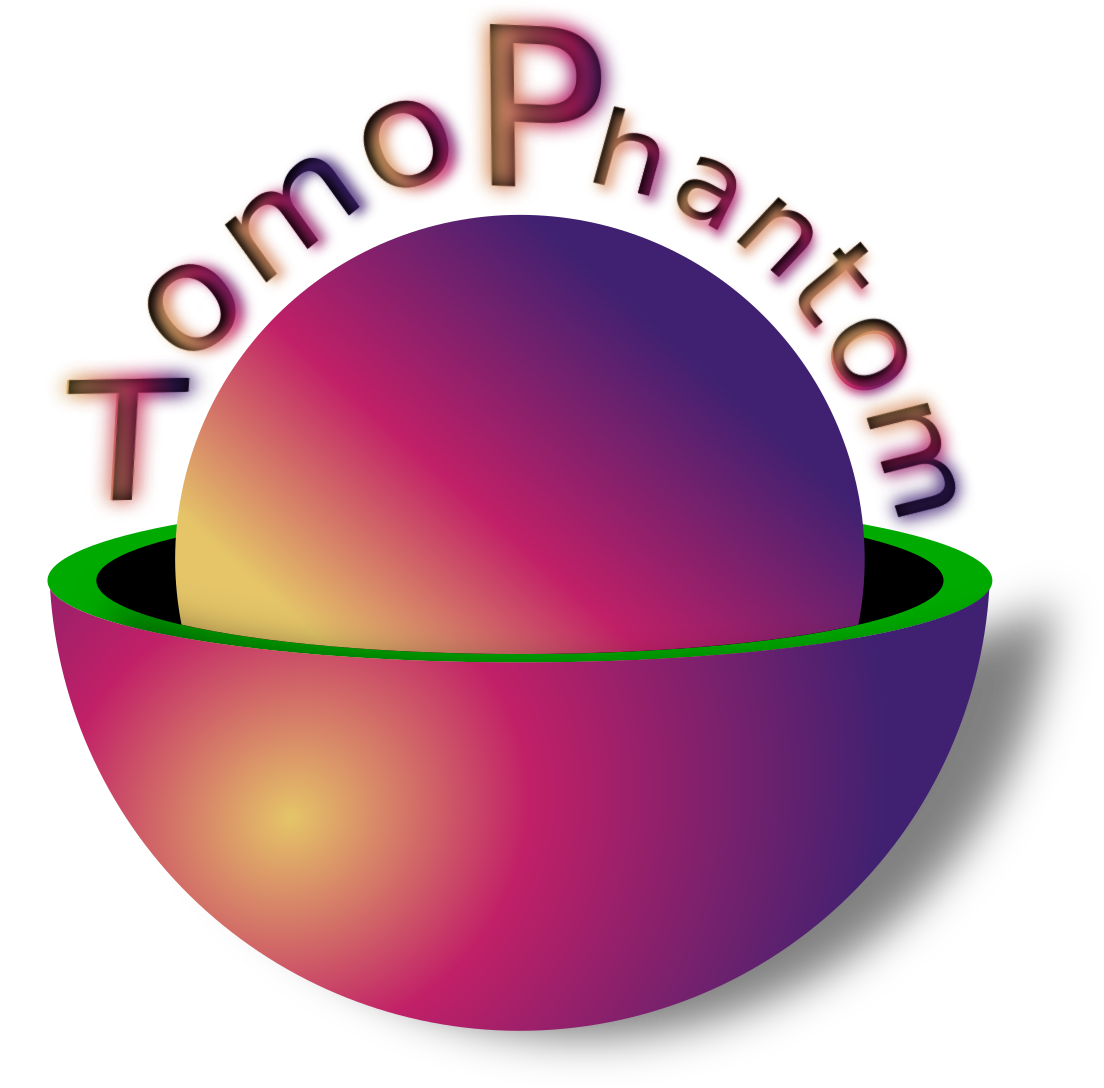"""Modules to generate synthetic flats/darks and data.
"""
from scipy.special import spherical_yn
from scipy.ndimage import gaussian_filter, shift
import random
import numpy as np
from tomophantom.artefacts import noise
from tomophantom.supp.speckle_routines import simulate_speckles_with_shot_noise
[docs]
def synth_flats(
projData3D_clean: np.ndarray,
source_intensity: int,
detectors_miscallibration: float = 0.05,
variations_number: int = 3,
arguments_Bessel: tuple = (1, 25),
specklesize: int = 2,
kbar: int = 2,
sigmasmooth: int = 3,
jitter_projections: float = 0.0,
flatsnum: int = 20,
) -> list:
"""Function to generate synthetic flat field images and raw data for projection data normalisation.
This is more realistic modelling of stripes and various artefacts rising after normalisation operation.
Args:
projData3D_clean (np.ndarray): 3D projection data of the following shape: (DetectorsVert, anglesDim, DetectorsHoriz).
source_intensity (int): Source intensity which affects the amount of the Poisson noise added to data.
detectors_miscallibration (float, optional): A constant which perturbs some detectors positions, leading to more prounonced ring artefacts. Defaults to 0.05.
variations_number (int, optional): A type of function to control stripe type (1 - linear, 2, - sinusoidal, 3 - exponential). Defaults to 3.
arguments_Bessel (tuple, optional): A tuple of 2 arguments for 2 Bessel functions to control background variations in flats. Defaults to (1,25).
specklesize (int, optional): Speckle size in pixel units for flats background simulation. Defaults to 2.
kbar (int, optional): Mean photon density (photons per pixel) for background simulation. Defaults to 2.
sigmasmooth (int, optional): Gaussian smoothing parameter to blur the speckled backround (1,3,5,7,...). Defaults to 3.
jitter_projections (float, optional): An additional random jitter to the projections in pixels. Defaults to 0.0.
flatsnum (int, optional): A number of flats to generate. Defaults to 20.
Returns:
list: List that contains [np.uint16(projData3D_raw), np.uint16(simulated_flats), blurred_speckles_map]
"""
[DetectorsDimV, projectionsNo, DetectorsDimH] = np.shape(projData3D_clean)
# output datasets
flats_combined3D = np.zeros(
(DetectorsDimV, flatsnum, DetectorsDimH), dtype="uint16"
)
projData3D_raw = np.zeros(np.shape(projData3D_clean), dtype="float32")
# normalise the data
projData3D_clean /= np.max(projData3D_clean)
# using spherical Bessel functions to emulate the background (scintillator) variations
func = spherical_yn(
1,
np.linspace(
arguments_Bessel[0], arguments_Bessel[1], DetectorsDimV, dtype="float32"
),
)
func += abs(np.min(func))
flatfield = np.zeros((DetectorsDimV, DetectorsDimH))
for i in range(0, DetectorsDimH):
flatfield[:, i] = func
for i in range(0, DetectorsDimH):
flatfield[:, i] += np.flipud(func)
if specklesize != 0.0:
# using speckle generator routines to create a photon count texture in the background
speckle_background = simulate_speckles_with_shot_noise(
[DetectorsDimV, DetectorsDimH], 1, specklesize, kbar
)
else:
speckle_background = np.ones((DetectorsDimV, DetectorsDimH))
# model miscallibrated detectors (a possible path to generate ring artifacts)
blurred_speckles_map = np.zeros((DetectorsDimV, DetectorsDimH, variations_number))
for i in range(0, variations_number):
speckles = simulate_speckles_with_shot_noise(
[DetectorsDimV, DetectorsDimH], 1, 10, 0.03
)
# blur the speckled background
blurred_speckles = gaussian_filter(speckles.copy(), sigma=sigmasmooth)
# threshold the result
blurred_speckles[blurred_speckles < 0.6 * np.max(blurred_speckles)] = 0
blurred_speckles_map[:, :, i] = blurred_speckles
blurred_speckles_map /= np.max(blurred_speckles_map)
sinusoidal_response = (
np.sin(np.linspace(0, 1.5 * np.pi, projectionsNo))
+ np.random.random(projectionsNo) * 0.1
)
sinusoidal_response /= np.max(sinusoidal_response)
exponential_response = (
np.exp(np.linspace(0, np.pi, projectionsNo))
+ np.random.random(projectionsNo) * 0.1
)
exponential_response /= np.max(exponential_response)
# prepeare flat fields
for i in range(0, flatsnum):
# add speckled background to the initial image with the Bessel background
flatfield_combined = flatfield.copy() + 0.5 * (
speckle_background / np.max(speckle_background)
)
flatfield_combined /= np.max(flatfield_combined)
# adding Poisson noise to flat fields
flatfield_poisson = noise(
flatfield_combined * source_intensity, source_intensity, noisetype="Poisson"
)
flatfield_poisson /= np.max(flatfield_poisson)
flats_combined3D[:, i, :] = np.uint16(flatfield_poisson * 65535)
# convert synthetic projections to raw-data like projection ready for normalisation
for i in range(0, projectionsNo):
proj_exp = (
np.exp(-projData3D_clean[:, i, :]) * source_intensity * flatfield_poisson
) # raw projection
for j in range(0, variations_number):
if j == 0:
# adding a consistent offset for certain detectors
proj_exp += (
blurred_speckles_map[:, :, j]
* detectors_miscallibration
* source_intensity
)
if j == 1:
# adding a sinusoidal-like response offset for certain detectors
proj_exp += (
sinusoidal_response[i]
* blurred_speckles_map[:, :, j]
* detectors_miscallibration
* source_intensity
)
if j == 2:
# adding an exponential response offset for certain detectors
proj_exp += (
exponential_response[i]
* blurred_speckles_map[:, :, j]
* detectors_miscallibration
* source_intensity
)
projection_poisson = noise(proj_exp, source_intensity, noisetype="Poisson")
# apply jitter to projections
if jitter_projections != 0.0:
horiz_shift = random.uniform(
-jitter_projections, jitter_projections
) # generate random directional shift
vert_shift = random.uniform(
-jitter_projections, jitter_projections
) # generate random directional shift
projection_poisson = shift(
projection_poisson.copy(), [vert_shift, horiz_shift], mode="reflect"
)
projData3D_raw[:, i, :] = projection_poisson
projData3D_raw /= np.max(projData3D_raw)
return [
np.uint16(projData3D_raw * 65535),
np.uint16(flats_combined3D),
blurred_speckles_map,
]

